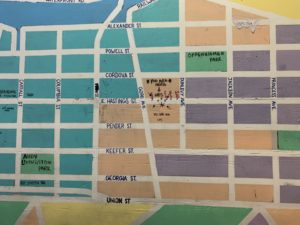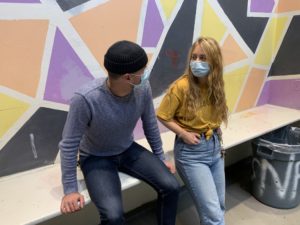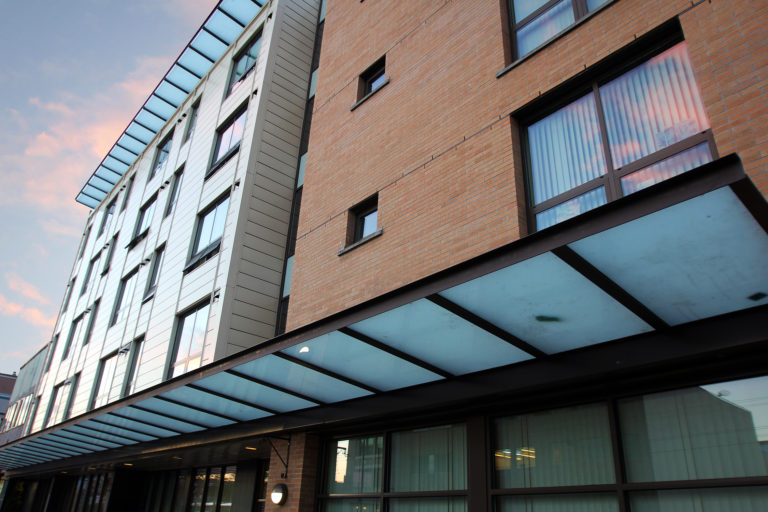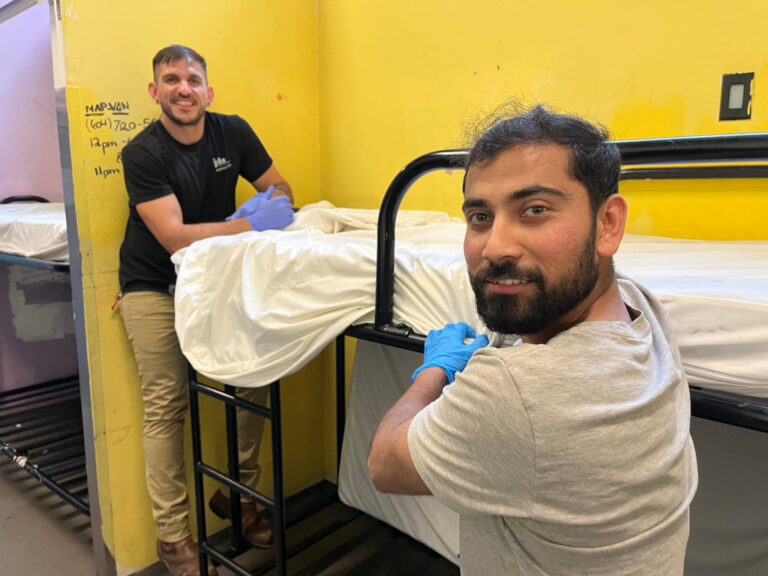PHS’s New Fountain Shelter allows open drug use – to save lives.
Shelter guests who use IV drugs are welcome to do so in a seated common area where community members are around to call for help and staff on hand to step in with naloxone and oxygen in case of drug poisoning.
Destigmatizing drug use by bringing it out in the open is saving lives. The alternative is people using in bathrooms or tucked away in curtained sleeping spaces where drug poisoning is most likely to prove fatal.
“We want people coming into the shelter to understand that their drug use is not a barrier to their health, safety or comfort,” said New Fountain Shelter manager Amy Widmer.
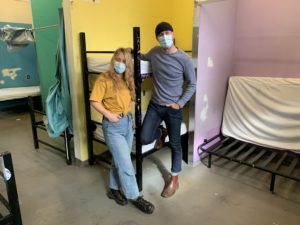 New Fountain Shelter is a friendly, 60-bed unit, with bunks and separate sleeping areas behind curtained alcoves. There’s a common area for eating, watching TV and hanging out.
New Fountain Shelter is a friendly, 60-bed unit, with bunks and separate sleeping areas behind curtained alcoves. There’s a common area for eating, watching TV and hanging out.
It’s co-ed, but with an optional separate space for anyone female-identifying. Open daily from 7 p.m. until 9 a.m. guests are served nutritious meals created by the PHS Food Program.
“There’s no point having Narcan if it’s a stigmatized environment where people have to hide their drug use,” said PHS senior housing manager Duncan Higgon.
“People need to be able to use openly. This means that shelter guests don’t have to find somewhere hidden away to take drugs, like a bathroom, and open use makes it much easier for staff to perform interventions on overdoses.
“The rate of overdose is increasing, and really, it’s a question of how quickly you can intervene. The quicker you can react, the better the health outcomes.”
OD risk more urgent than COVID
He said overdose is a more urgent health concern for shelter guests than COVID-19, although the shelter was able to operate throughout the pandemic pretty much as normal.
Amy said: “During COVID our sheltering capacity did not change. The only thing that changed was how we used oxygen when responding to overdoses.
“We built a gurney so we could take people outside so we could continue providing oxygen for overdoses. We didn’t change what we did because of COVID.”
During the early days of the pandemic, a public health order limited the use of oxygen indoors when reversing overdoses, for fear it would release an aerosol of particles.
The PHS response was to provide oxygen outside, as its use can prevent traumatic brain injury in the person being revived.
It’s pretty much a given that many guests at a low-barrier shelter are going to use drugs. The question is: how do you reduce the negative health outcomes of this? A harm reduction approach makes sense and saves lives.
It’s all about radical pragmatism, as with everything else PHS does.
- Learn more about PHS supportive housing projects in Vancouver and Victoria, B.C.
- Donate to continue innovative projects like this.
